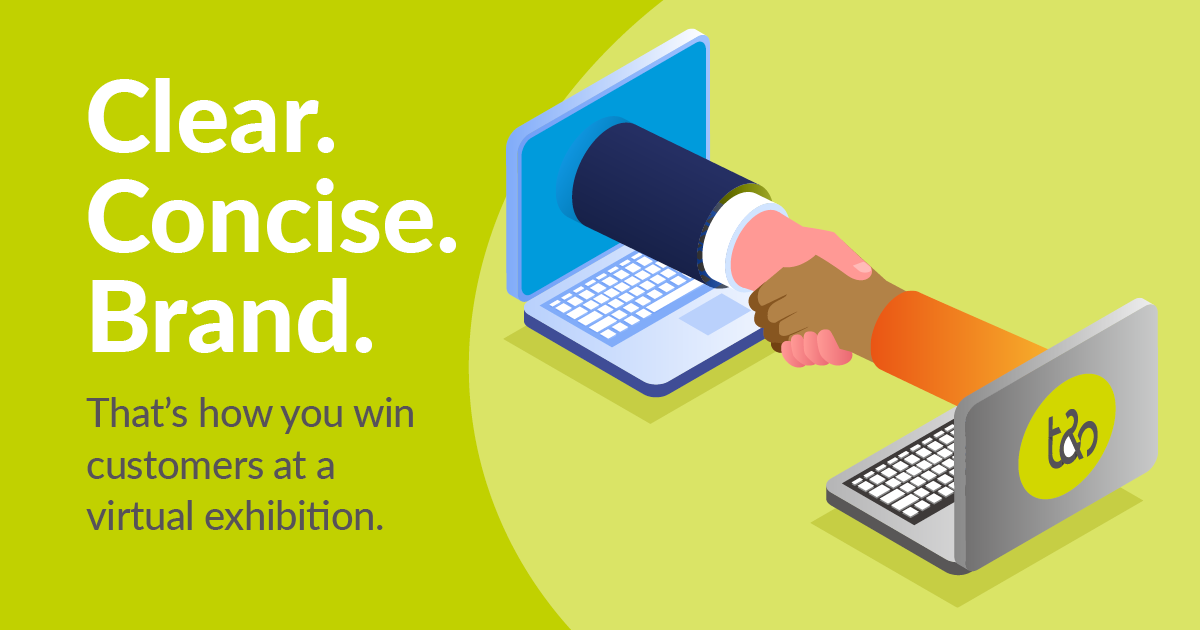
2020 introduced us to a handful of unpredictable challenges that businesses – both big and small – were able to overcome in the best of ways. With 2021 well underway now, we find ourselves slowly easing back into what was once considered ‘normal’, but it’s evident that certain practices learnt over the past year may not phase out that quickly.
Virtual events soon became a viable solution to organise gatherings and business conferences. And, although they aren’t here to replace their predecessors, these virtual events have proven that they are a viable way to bring people and businesses together from all over the world.
But despite these virtual events being a much-needed solution for organised gatherings over the past year, they have brought with them other challenges. One of the most recent conferences we attended had over 1000 delegates, but at one point we noticed there were only 72 people active. That means that people are less engaged, less talkative, and evidently more reluctant to interact with people and companies than they ordinarily would.
As an agency, we always found ourselves ever-present and talking with people when at live events, so the most immediate problem we recognised was: how do you get people to interact with you to get valuable leads?
Naturally, the first thought would be to get involved with networking sessions which are still regularly organised to be a part of these virtual events. But sometimes that’s not enough. At many of these conferences we also have virtual exhibitions present, so one challenge for us – and many other vendors – was to figure out how to get people to engage with you at your virtual stands.
We’ve spoken to a lot of show organisers over the past couple of weeks and all of them have said that they’ll be delivering hybrid events that offer both in-person and virtual options. This gives delegates a choice of how to attend and expands audience reach and engagement. As such, if you’re intending on exhibiting at any event this year, you need to prepare your event for an in-person and virtual stage. Here are a few key things you need to consider:
- Your Virtual Exhibition: This is where people will come to learn more about who you are and what you do. So what are you offering them for their time? Your stand needs to convey your message clearly and succinctly; a convoluted, vague, or abstract message isn’t going to encourage anyone to get in touch. At a physical event, people could see you from a distance, come up and talk to you to learn more, and walk away from a beneficial interaction. At a virtual event, however, there’s no one to talk to them unless they actively choose to give you a nudge. If your message isn’t clear, people won’t engage, and you won’t get contact details to follow up!
- Promote yourself before the event: Consider the fact that these events are all about clear and concise messaging and communication. In-person events often had the benefit of people seeing you from across the room and deciding to come and talk to you. At a virtual event, however, if they don’t know you’re supposed to be there, it’s hard to fault them for not coming to talk to you. So what are you doing to make sure people show up? Engaging with people online and reiterating your message and reason for going gives people more reason to come and find you on the day (or days, plural).
- Stay active throughout the event: Virtual events, like in-person events, often encourage delegates to interact with the event on social media, be it by tagging them, or by using a hashtag that people can keep tabs on. It’s important for you, as a business or otherwise, to take advantage of these discussions, groups, or hashtags that are made almost entirely for these events. The more you engage online during the event, the more likely it is that people will notice you’re there. Especially when they’re actively looking for specific hashtags from the event!
- Follow up: Remember, it’s not over until the fat lady sings! Just because the event’s over doesn’t mean the job is done. Any engagement is an opportunity to create and foster working relationships, whether on the event platform, social media, or otherwise. If people make the effort to talk to you during the event, be sure to follow up with them when it’s over. This could be an email, a message on social media, or perhaps an opportunity to schedule a call – whatever you do, make yourself as available as possible. Beyond direct contact with people, also consider keeping any offers open and available to people long after the event has ended, and continue to promote your work and offers to keep your business front of mind. After all, who knows… maybe a few weeks after the event has ended, a single tweet will remind someone they needed to get in touch!
In-person conferences and events may make a comeback at any moment, but virtual events have proven their worth connecting businesses from around the world. If you want to stand out to potential customers at these events, it’s important that you give them a reason to engage with you. If you have a lot to tell your customers but are not sure how to get the message across, our team is always primed and ready to help you out.

